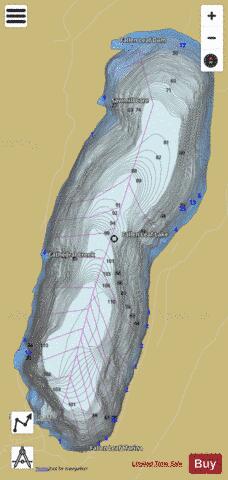
In the early 1990s, Lisa Heki corresponded with a colleague, Utah biologist Bryce Nielson, who told her he found what appeared to be a strain of Lahontan cutthroat trout in a small stream in the Pilot Mountains along the Utah-Nevada border. The native species was all but wiped out from Lake Tahoe, but a collaborative effort has brought the fish back. For more on the USFWS Pacific Southwest region, go to fws.gov/cno.Ĭrowds gather to watch Lahontan cutthroat trout stocking on Oct. Other partners in this effort include the California Department of Fish and Wildlife and Tahoe Regional Planning Agency. CSĮditor’s note: Joanna Gilkeson is a public affairs specialist at the Reno office of the U.S. Reports from the public will assist NDOW and USFWS in collecting data and information about the movement and survival of these fish after release. “This information will be crucial in the future recovery of the species in the Tahoe Basin.” “The data gathered from the floy-tagged fish will help us understand how Lahontan cutthroat trout are using habitat in the lake,” said NDOW fisheries biologist Travis Hawks. 7 at Sand Harbor State Beach in Nevada in partnership with Nevada Department of Wildlife.Ī total of 5,000 fish were released over the course of three days, all with the adipose fin clipped to help anglers identify stocked fish.Ībout 2,000 of these fish also received an external tag known as a “floy tag.” The tags encourage anglers to call a hotline and report the stocked fish along with as much information as possible about the catch. “Sharing it with the enthusiastic and supportive people of Lake Tahoe made it truly special and encouraging for the future of this unique trout.” A Lahontan cutthroat trout with floy tag attached prior to stocking.Ī THIRD AND FINAL stocking effort was held on Oct. “It was exhilarating to see the native trout return to their home waters in beautiful Lake Tahoe after years of working for this moment,” she said. Over the course of the Fall Fish Festival, several hundred people watched the hatchery reintroduce the native Lahontan cutthroat trout into Lake Tahoe.įor Heki, the event is a highlight of her career. 6, at the same location near Kiva Beach along Lake Tahoe. The hatchery followed up with a second stocking on Oct. Stocking will enhance angling opportunities in Lake Tahoe and improve visibility of this important native trout in local communities and for those recreating in the area. The trout could be seen darting through the clear, crisp alpine lake, and even ran into a few spectators’ legs as they swam to freedom.


The colorful 12- to 14-inch fish were released from a large holding truck through a stocking tube.

“With this stocking event, the trout is returning home.” “Lahontan National Fish Hatchery’s broodstock population represents the genetic legacy of the original Lahontan cutthroat trout population that once thrived in Lake Tahoe,” said Lisa Heki, project leader for the Lahontan National Fish Hatchery Complex. Forest Service Lake Tahoe Basin Management Unit’s Fall Fish Festival near South Lake Tahoe. The stocking event occurred in tandem with the U.S. A Lahontan cutthroat trout.ĪFTER YEARS OF PLANNING and hard work, the Lahontan National Fish Hatchery, for the first time ever, released approximately 2,000 fish into Lake Tahoe on Oct. Through years of reintroduction, research, adaptive management and partnerships, much has been learned about the conservation needs of Lahontan cutthroat trout in Lake Tahoe. Fish and Wildlife Service has been developing and implementing strategies to help the trout return home.īeginning in 2002, USFWS’s Lahontan National Fish Hatchery Complex started working to restore the iconic lake-form of Lahontan cutthroat trout in Fallen Leaf Lake, located in the Tahoe Basin. The cutthroat continued to decline across its range and was eventually listed under the Endangered Species Act in 1970.

This was mainly due to sweeping shifts in natural resource management, like logging and overfishing from early settlement in the West in the 1900s.Īs numbers of Lahontan cutthroat trout dwindled, their position as top predator in Lake Tahoe was backfilled by stocked non-native sportfish such as lake trout, rainbow trout and kokanee salmon. Lahontan cutthroat is the only trout species native to Lake Tahoe, yet they completely disappeared from that ecosystem by the 1930s. This story appears in the December issue of California Sportsman and can be found on the USFWS website: Photos by Joanna Gilkeson/USFWS
Fishing fallen leaf lake plus#
Fish and Wildlife Services’s Pacific Southwest Region, plus a Q&A with Lisa Heki, a biologist who spearheaded a decades-long effort. Merry Christmas and Happy Holidays! We think this is a feel-good story about a resurgence of a native trout species that had all but disappeared from Lake Tahoe.


 0 kommentar(er)
0 kommentar(er)
